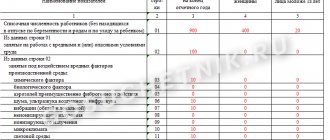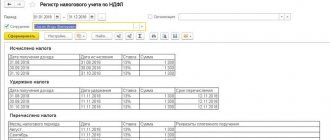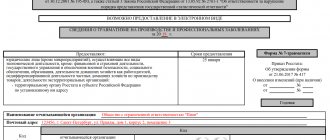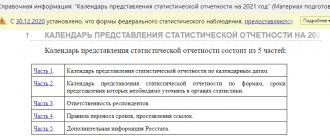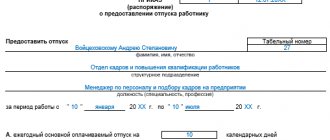Why do you need statistics form No. 5-Z?
The form in question is a statistical reporting document and should, based on the results of the 1st quarter, half a year and 9 months - before the 30th day of the month following the reporting period, be sent to Rosstat by all legal entities that are not SMPs, banks, insurance and other financial firms, and also those not included in the budget system.
Small businesses include companies that:
- have a staff of up to 100 people (subclause 2, clause 1.1, article 4 of the law “On the development of small and medium-sized businesses” dated July 24, 2007 No. 209-FZ);
- have revenue not exceeding RUB 800,000,000. per year (clause 1 of the Decree of the Government of the Russian Federation dated July 13, 2015 No. 702).
- have an authorized capital of which no more than 25% belongs to the state (or municipality), 49% to foreign or other legal entities that are not subjects of the SMP.
Such firms are not required to send the reporting document in question to Rosstat.
Using Form 5-Z, Rosstat is informed about the company’s expenses for the production and sale of goods, services and work. This information is reflected for the entire legal entity as a whole - the document also takes into account those figures that characterize the activities of the company’s divisions.
At the same time, Form 5-Z is submitted to Rosstat by the company, its subsidiaries, as well as organizations dependent on it, separately. Information about subsidiaries and dependent organizations is not recorded by the reporting company in the financial statements.
Form No. 5-Z, current in 2021, was approved by Rosstat order No. 320 dated July 15, 2015.
NOTE! Instructions for filling out Form 5-Z for 2021 were approved by Rosstat Order No. 65 dated February 12, 2018 and are applied taking into account additions from Order No. 63 dated February 12, 2019.
Signs that determine whether a company belongs to a small business entity (SMB)
- The number of employees of the company does not exceed 100 employees (Article 4 of the Federal Law of July 24, 2007 No. 209-FZ).
- The authorized capital of the organization has the following structural relationships:
– the state owns no more than 25.0% of the authorized capital;
– foreign companies own no more than 49.0% of the authorized capital.
Enterprises that meet all of the above requirements do not have to submit Form 5-3 to statistics departments.
Thanks to this form, the statistical office receives information about what funds are spent by enterprises (organizations, firms) in order to organize and produce products, sell goods, provide services and perform work. Information of this nature is indicated for the entire enterprise.
Section 1
Section 1 of Form 5-Z reflects the main economic indicators of the organization given in column 1 of the table in this section - for the reporting period, as well as for the same period last year.
The corresponding economic indicators can be classified into the following main groups:
1. Indicators of shipment and sale of goods, services and works.
Since 2021, it has been clarified that the sales volume in line 01 must be indicated without taking into account customs and export duties (Rosstat order No. 63 dated February 12, 2019).
2. Expenses:
- for the purchase of goods for resale;
From 2021, it is clarified that lines 03 and 04 reflect real estate acquired for resale, and there are also a number of clarifications for persons associated with construction (Rosstat order No. 63 dated 02.12.2019).
- for the purchase of raw materials, materials, semi-finished products for production;
- for the purchase of fuel, energy, water;
- for the purchase of raw materials, materials and semi-finished products purchased for production, but subsequently resold;
- for the reclamation of land areas;
- for wages, contributions to state funds;
- for insurance;
- for rent;
- to pay for the services of third-party companies;
- for the purchase of forest plantations;
- representative;
- others.
3. Balance indicators:
- for goods originally purchased for resale;
Starting from 2021, lines 04 and 05 reflect unsold real estate items as inventory balances (Rosstat order No. 63 dated February 12, 2019).
- on raw materials, materials and semi-finished products for production;
- for finished products;
- for work in progress.
4. Depreciation:
- fixed assets;
- intangible assets.
5. Taxes included in the cost of goods, services, and work.
Section 1 of Form 5-Z is also supplemented with a reference block. It records, in relation to the reporting period, as well as the same period last year:
- cost of used raw materials;
- the amount of VAT for the reporting period;
- the amount of subsidies received from the budget;
- the amount of fees for using the infrastructure given in lines 67–70 of the table in section 1 (as part of the costs).
The data in the table of section 1 is recorded in thousands of rubles.
Reporting production costs and product costs
Information on production costs is information that an enterprise is obliged to provide to tax and statistical authorities. To achieve this goal, the following reporting forms are provided:
- · balance sheet f. No. 1 (Section “Current assets - inventories in work in progress”). This reflects the balances of work in progress at the beginning and end of the reporting period;
- · form No. 5 of the appendix to the balance sheet - breakdown of costs by economic elements;
- · monthly statistical reporting form No. 1-service, form No. 5;
- · monthly form No. 1-labor “Report on labor and movement of workers”;
- · monthly form No. 3-torg - report on sales and inventories of goods;
- · quarterly form No. 1-U - basic information about the release of goods and services;
- · monthly, annual form No. 1-service - report on the volume of paid services to the population;
- · monthly form No. 1-torg - report on trade turnover and inventories of goods;
- · quarterly form No. 1-f - report on the use of funds;
- · quarterly form No. 2-f - report on the composition of funds and sources of their formation;
- · annual form No. 4-f - report on individual financial indicators;
- · monthly form No. 6f - debt report;
- · monthly form No. 2-ks - report on the commissioning of facilities, fixed assets and the use of investments in fixed capital;
- · monthly form No. 1-t (debt) - report on overdue wages.
Revision (audit) of production costs
The accounting method must ensure a constant, inextricable connection between data reflecting the movement (turnover) of economic assets with indicators characterizing the sources of formation of these funds. Cost is the totality of costs and expenses of an enterprise for the production and sale of products (works, services) and includes the cost of consumed natural resources, raw materials and materials, fixed assets and intangible assets, various types of energy, labor resources and other costs. When determining the full cost, sales costs are added to the above. Since cost as an economic category shows how much it costs a particular enterprise to produce and sell, and how economically profitable this production is, currently, accounting and control of production costs and costing occupy a dominant place in the general system of accounting and control. In countries with developed economies, these areas of accounting are separated into so-called management accounting. Such “accounting for management” is qualitatively different from traditional accounting (financial) primarily in its efficiency and slightly different logic in correlating costs and profits.
The main task of a product cost audit is to identify reserves for reducing product costs and develop measures to eliminate the causes of rising product prices and mobilize hidden reserves for reducing product costs.
The audit begins with a review of the reporting data presented in the quarterly or annual appendices to the reporting on the implementation of the production cost plan, the actual cost of manufactured products according to costing items and the costs of production by economic elements for the period from the beginning of the year.
When checking the validity of including costs in the cost price, based on the information provided by the accounting staff of Confectionery Bazaar LLC, no significant violations were found in the assessment of material assets or in the reflection of the inventory acquisition process. When writing off the cost of raw materials and materials as expenses, it is not allowed to overestimate the consumption against established norms and standards. Primary documents are drawn up in accordance with the order of their completion, corrections, where they are allowed, are separately specified. The verified documents do not contain any violations; in fact, they look neat and contain no signs of falsification.
Checking the validity of attributing “Labor expenses” to cost showed compliance of the organization of accounting work with the requirements of the Instruction on the composition of the wage fund and social payments. The completeness and accuracy of expenses under the item “Deductions for social needs” was checked and no errors were identified.
Costs are allocated for the element “Depreciation of fixed assets and intangible assets” based on the linear method of calculating depreciation amounts by object (according to the Accounting Policy of Confectionery Bazaar LLC). No significant violations were found in this regard.
The item “Other costs” includes taxes, fees and deductions for insurance premiums; expenses for communication services also correspond to clause 2.10. Basic provisions on the composition of costs, calculations and contracts.
Entertainment expenses, advertising expenses, training and retraining, and advanced training of personnel are included in the cost in the amount of actual expenses incurred. For tax purposes, accounting maintains analytical accounting of expenses attributable to cost in excess of established limits and norms.
When checking the composition of costs included in the cost of production in the context of costing items, cost estimates, the validity of the standards for the consumption of materials and components and their compliance with the preparation of actual calculations were considered.
There is no doubt that in order to predict the main directions of searching for reserves for reducing production costs, it is necessary to study production costs and their structure over several years. Unfortunately, such information is on
LLC Confectionery Bazaar, like many enterprises of this level, is closed.
Inventory at Confectionery Bazaar LLC is carried out annually, and cash register inventory is carried out once a quarter. The inventory was carried out in full and no violations were found.
In general, when checking the organization of cost accounting and cost calculation, one should recognize their compliance with the technological features of production and the provisions of the enterprise’s Accounting Policy. When checking the compliance of primary documents with analytical and synthetic accounting data, financial reporting information, the completeness and reliability of accounting records is not in doubt. No significant violations were identified in the preparation of primary documents. In general, the organization and level of accounting work at Confectionery Bazaar LLC should be considered positive. During the audit, no facts were discovered from which it can be concluded that the internal control system of Confectionery Bazaar LLC does not correspond to the scale and nature of its activities.
>Filling out form P-1
Section 2
Section 2 of Form 5-Z reflects data on electricity and thermal energy produced by the company and supplied to the market. In correlation with such indicators as production volume, as well as production and transmission costs - for the period from the beginning of the year to the reporting and similar periods of last year, the following information is indicated:
- on electricity production;
- on the production of thermal energy;
- about transmission services for each type of energy.
The data in the table in section 2 is also recorded in thousands of rubles.
The procedure for calculating and paying insurance premiums in 2021
When you look at the old and new forms N 5-Z, you remember a child’s game like “find seven differences.” It is not possible to immediately find the differences. Having spent a sufficient amount of time, we finally found them in the names of the indicators of lines 1 and 2.
Line 2: “Sold goods of non-own production (excluding VAT, excise taxes and similar mandatory payments).”
Insurance contributions are mandatory payments for pension, medical and social insurance of employees and individual entrepreneurs. From 2021, control over the calculation and payment of contributions has again been transferred to the Federal Tax Service, which until 2010 was already collecting such payments under the name Unified Social Tax (UST).
The law contains the concept of mandatory insurance contributions. This is their minimum amount, calculated as a percentage of income.
First, you must fill out the cover page of the form correctly. The following information is entered in the appropriate columns :
- The reporting period for which information is provided.
- Name of the organization. In this case, it is necessary to indicate both short and full.
- Legal address of the company. In this case, it is necessary to indicate the actual location of the enterprise.
- OKPO and OKVED codes.
Document signature
The certification block of the form following Section 2 must include:
- date of completion of the document;
- signature of the head of the company or employee who has the authority to certify the document;
- an indication of the position of the person who signed the form, as well as his contact information.
This is the sequence of filling out form No. 5-Z. There are a number of nuances of working with the document that are useful to pay attention to - they are taken into account in the instructions for filling out Form 5-Z.
Filling out statistics form No. 5-Z: what to pay attention to?
When filling out form No. 5-Z, you must keep in mind that:
- the information indicated for a particular period of the previous year must completely coincide with that presented in the reports for the corresponding period earlier (unless the legal entity was reorganized or the methodology for reflecting indicators in the reports was changed);
- if the company was nevertheless reorganized or there were changes in the methodology for reflecting indicators in reporting, the information in Form 5-Z is provided based on the relevant changes;
- in any case, discrepancies between the indicators for the periods of last year, recorded earlier in the reporting and reflected in the current reporting, must be explained in the explanation to the document;
- information in the form is reflected on an accrual basis from the beginning of the year;
- data on business indicators reflected in the form must correspond to the documentation maintained by the company as part of accounting.
Results
Rosstat, collecting data as part of scheduled observations, instructs legal entities that are larger in scale than small enterprises (but do not belong to economic entities in the financial and budgetary sectors) to inform the agency about the costs associated with the production and sale of goods. For these purposes, form No. 5-Z is used.
You can find other information about reporting to Rosstat in the articles:
- “Procedure and sample for filling out the P-2 quarterly form”;
- “Procedure and sample for filling out form No. 1-Enterprise.”
You can find more complete information on the topic in ConsultantPlus. Free trial access to the system for 2 days.
